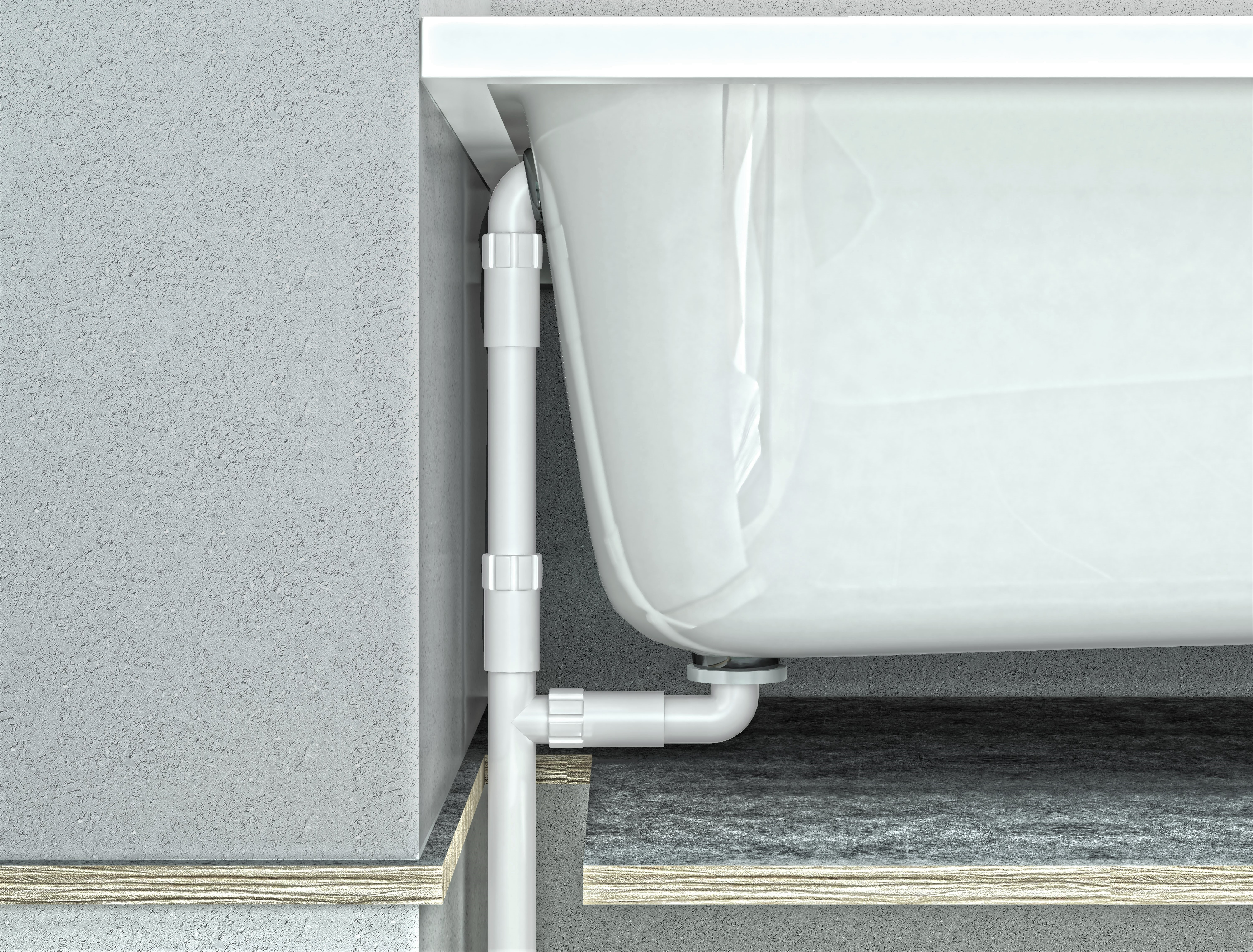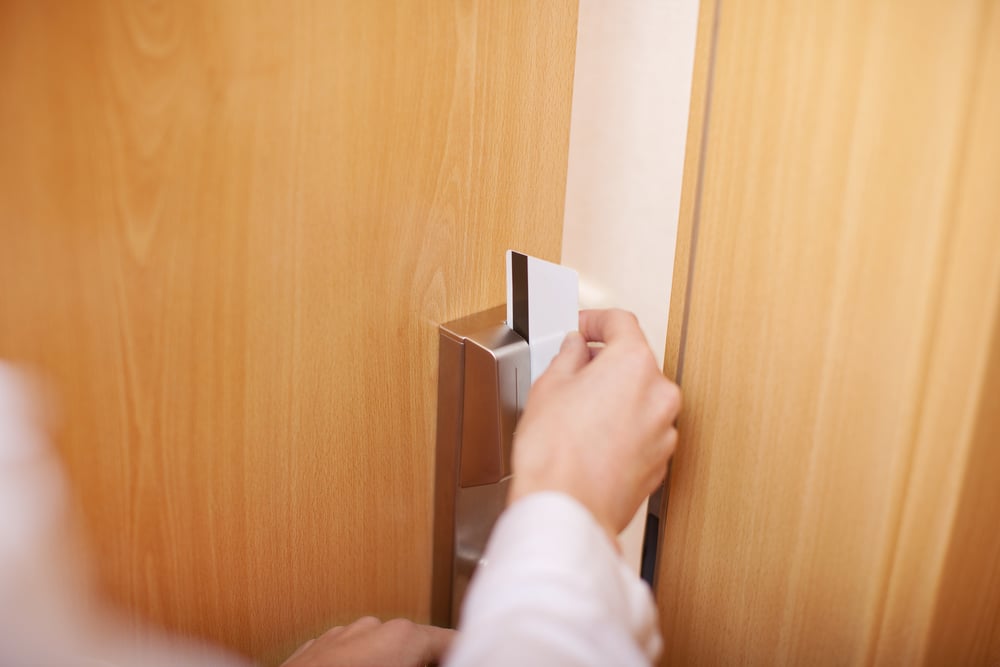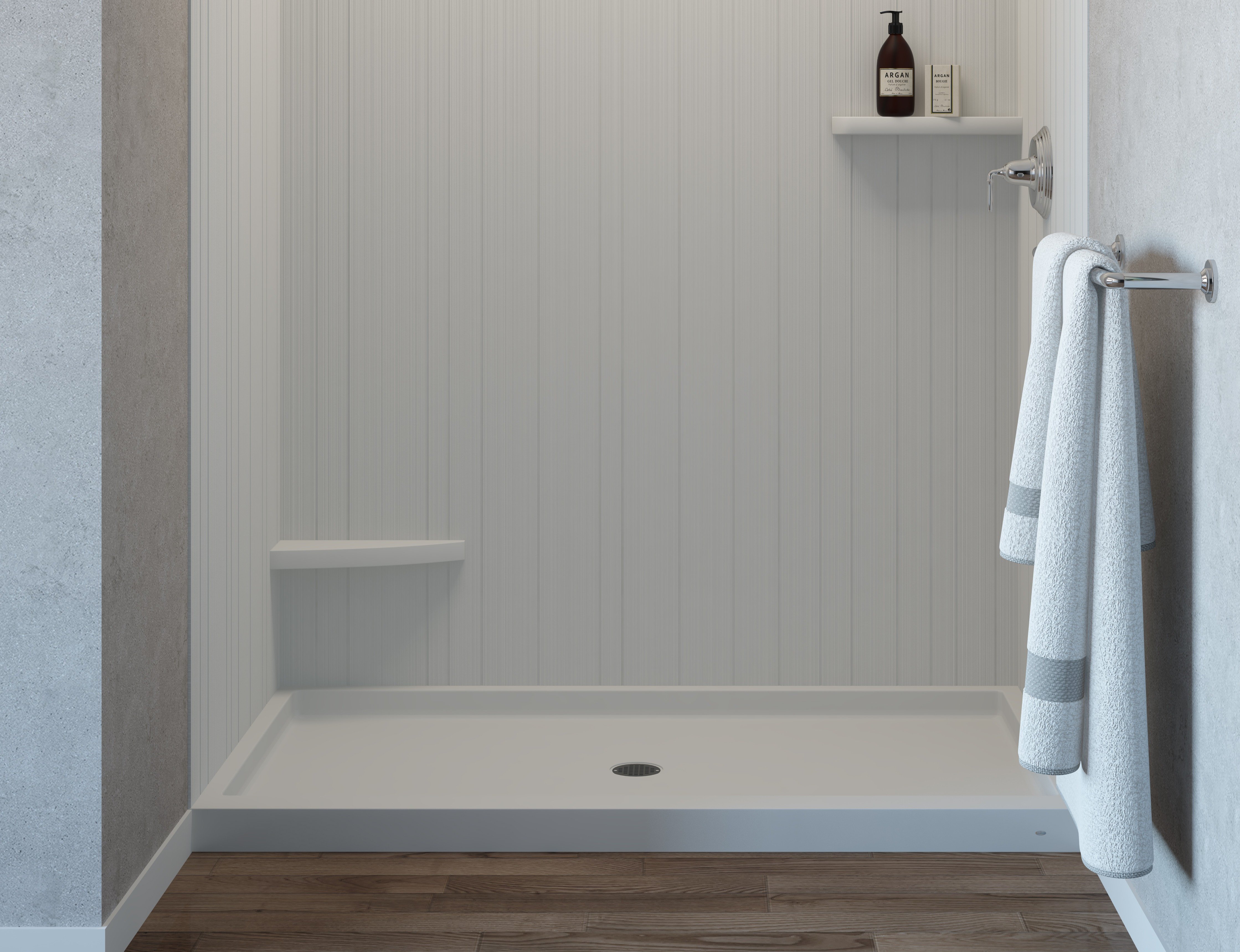The Shower Pan Guide [for Hotel + Multifamily Projects]
It's not surprising that 62% of respondents in a recent survey said that a clean bathroom was the most important feature of a hotel. We expect that the place where we take care of our personal hygiene is cleaned and sanitized. It should sparkle! And, even though the countertops may glisten, that stained shower pan can leave a negative impression.
Your property needs products that look new year after year AND are durable enough to withstand thousands of guests - or tenant after tenant. Choosing the right shower pan can ensure positive experiences for years to come.
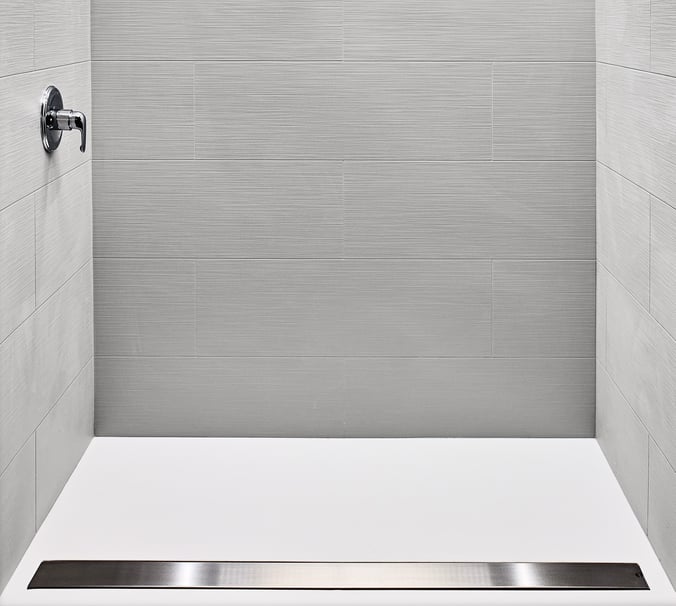
The size of it
The shower pan you choose is largely based upon the bathroom size and plumbing. Although it varies, one of the most common sizes for a hotel pan is 30” x 60” – usually because it's replacing a tub. Like the residential market, tub-to-shower conversions have been a standard practice in the hospitality world for years. They offer more accessibility and ADA compliant designs. In multi-family properties, pan sizes vary a lot more - 36”x48”, 36”x36”, and 48”x48”.
Rectangular pans are a common choice, but when working with a small bathroom footprint, a square-shaped option can offer guests and residents more space. A curved design is an ideal option for properties undergoing renovations that don’t include moving the plumbing (more on curved pans below).
Drains
The drain location will be determined by the plumbing. Most rooms in a multi-unit property are plumbed the same, but it's possible for every pan to have a different drain location (we’ve seen it!). If that’s the case, Mincey can customize each one to accommodate the drain.
Depending on where the plumbing is, circular drains can be placed anywhere (center, offset, or corner). Linear drains, however, are placed alongside the pan’s edge. These drains have grown in popularity in recent years due to their sleek design and placement away from the standing area. Mincey’s linear drains even come with a half-moon cutout for easy lifting, so cleaning staff can easily clean under the drain cover with just the pull of a finger.
Each drain location has its pros and cons - read about them here.
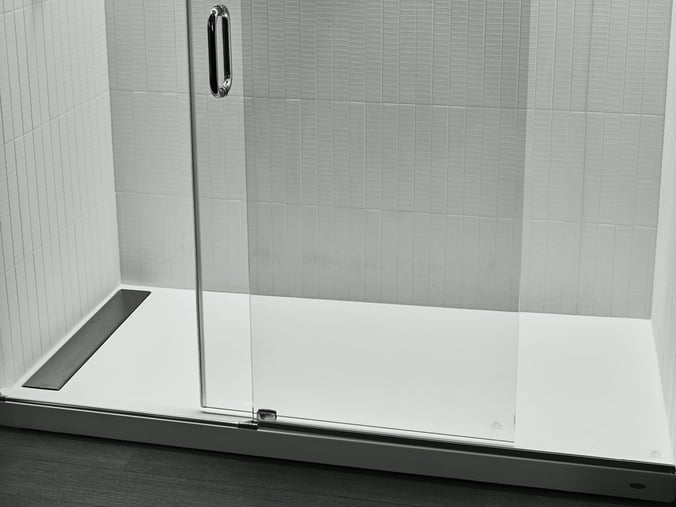
Material
The most crucial decision may be the material. Commercial properties need a material that is durable, waterproof, and won’t crack. We’ve broken down the most common materials used in shower pans:
Acrylic – these shower pans may be affordable, but they're essentially hollow. They can seem flimsy since they're lightweight. They also don't meet the technical requirements for most hotel brands and may not be the best option for multifamily properties where long term use is a standard.
Tile – you’ll get more design options with tile, but installation is labor-intensive and time-consuming. The floor will also require ongoing maintenance (regrouting and sealing) since tile is more prone to waterproofing failure. Tile is also harder to keep clean – which may slow down a hotel’s cleaning staff.
Cast marble (cultured marble)– these pans are extremely durable (weighing in at 200 lbs). Thanks to a gel coat finish, they’re resistant to scratches and stains. Cast marble is also easy to clean and maintain – grouting or resealing isn’t necessary – and drop-in installation is as simple as it gets.
Solid surface – these are hollow inside and still require a mudbed. They're often harder to clean (no gel coat) but can be resanded and repolished. Solid surface pans are typically imported and often more expensive than cast marble due to the resin used.
Ahead of the Curve: Renovations
Renovating a property often doesn’t allow for much design freedom. In the bathroom, this often translates to the plumbing staying where it is - meaning the toilet and shower remain in the same location. But with guests and residents demanding more space in the shower, this can pose a problem. Curved shower pans can solve this dilemma. They allow for enough space to accommodate the toilet while providing some extra room in the shower. A happy compromise.
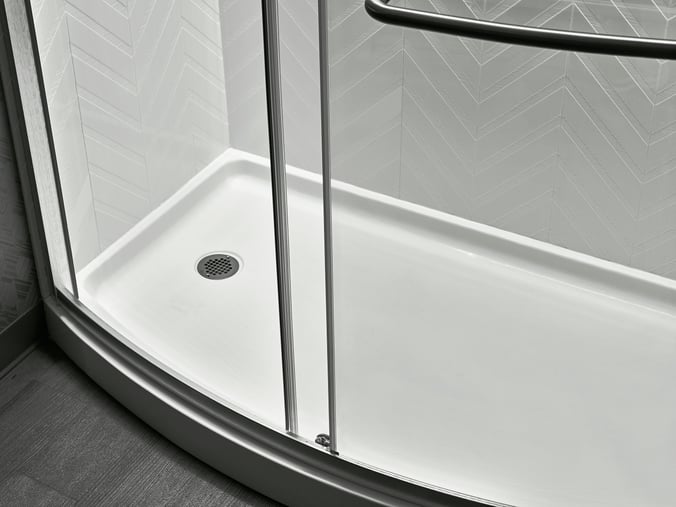
Go From Tub to Shower
Renovation pans are ideal for tub-to-shower conversions. The drain is in the same position as a typical tub drain, eliminating the need for a plumber to move waste lines. The sides are also the same depth as a standard tub. Renovation pans mean easy specification, easy installation.
There are some instances that require more than a renovation pan. For example, if you discover the tub's drain connection is above the floor. This calls for Mincey's side outlet drain - read about it here.
Accessible Shower Pans
If you’re looking for more accessible shower options, you’ll more than likely need a transfer or roll-in pan. A transfer shower pan is designed so that the user can easily transfer from a wheelchair onto a wall-mounted shower bench. A roll-in pan allows the user to roll directly into the shower with a wheelchair. These pans are also available in different sizes, shapes, and colors, although there are minimum shower size requirements to meet ADA guidelines.
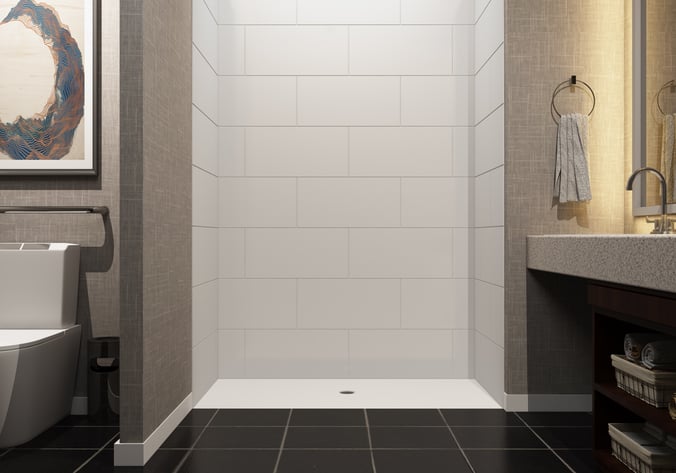
One Last Note: Protect Your Pans!
When ordering your shower pans, don’t forget our protective covers. These are acrylic sheets molded to fit your pans. When a property is undergoing construction, a lot can happen (think grout stains, dirt, and debris). These covers can save time and money. They keep your pans protected until it’s time for guests or residents to step inside the shower.
Why you should always use shower pan covers.
Whether you’re renovating a hotel or building a multifamily property, the shower pans you choose are very specific to your project. Mincey offers cultured marble pans in a variety of sizes, shapes, and colors. We can also customize your order based on your project's required size or drain location. Learn more about our pans.

